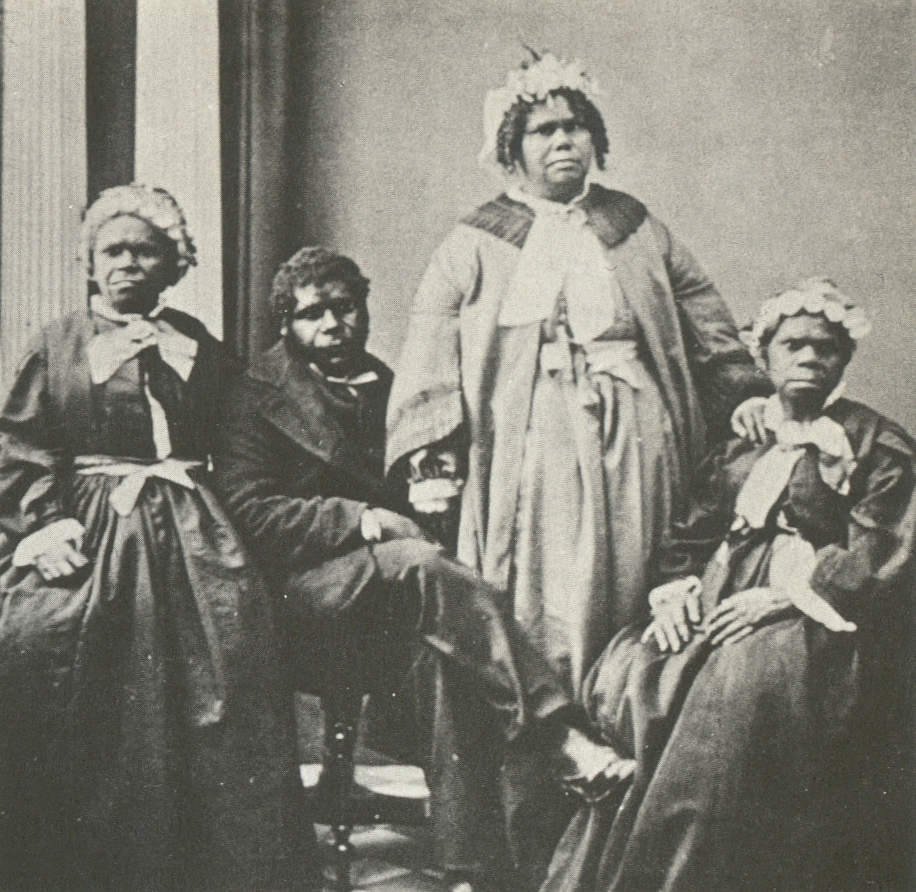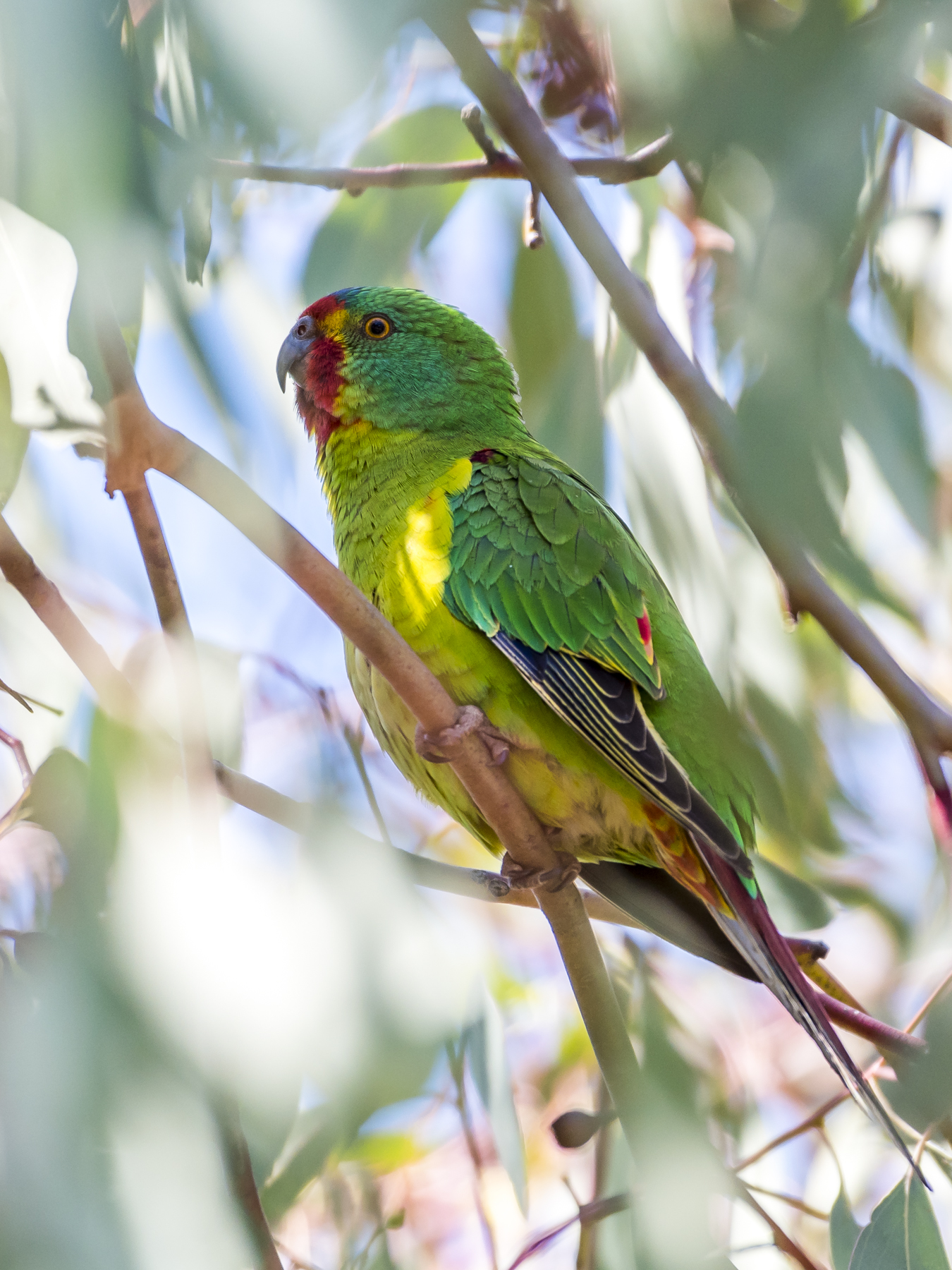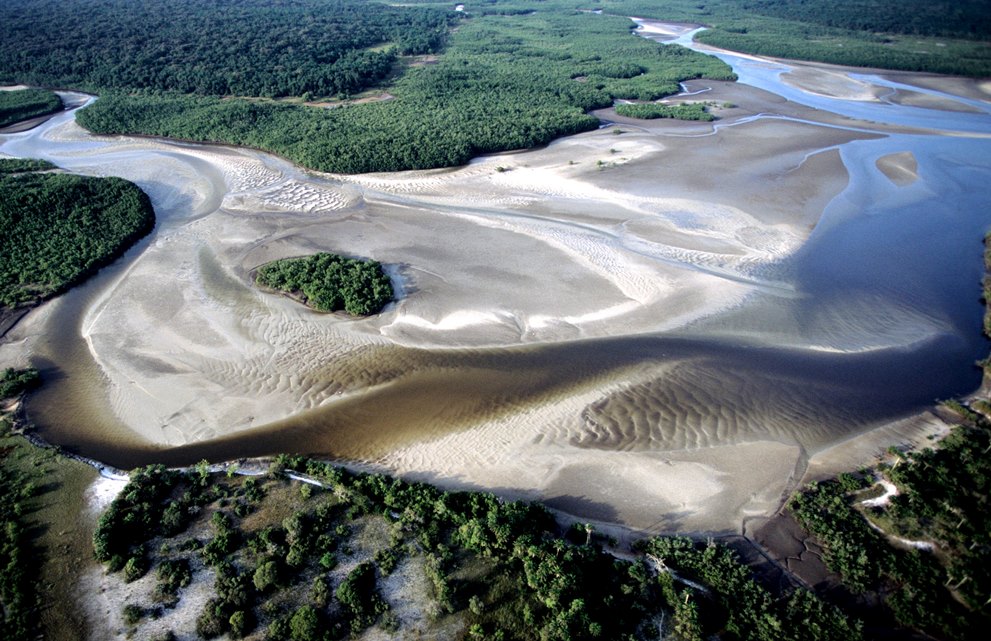|
Pitt Water (Tasmania)
Pitt Water is a region and estuarine area near Sorell, in southeastern Tasmania. It forms part of the Pembroke Land District and includes significant natural habitats, cultural heritage sites, and agricultural lands. Pitt Water was named by Lieutenant Governor Collins, who named the shallow stretch of water between Sorell and Midway Point after the then Chancellor of the Exchequer, William Pitt. Geography Pitt Water is a shallow estuarine system fed by the Coal River and connected to the Tasman Sea via Barilla Bay and the Frederick Henry Bay. The area is characterised by tidal flats, saltmarshes, and surrounding low-lying agricultural land. It is located approximately east of Hobart, the state capital of Tasmania. The region forms part of the greater Pitt Water–Orielton Lagoon system, which is an important ecological feature of southern Tasmania. The estuary's main central basin connects with smaller sub-basins, such as Orielton Lagoon and Iron Creek Bay, and ... [...More Info...] [...Related Items...] OR: [Wikipedia] [Google] [Baidu] |
McGees Bridge
McGees Bridge is a road bridge that carries the Tasman Highway across Pitt Water, near Sorell in the south-east of Tasmania, Australia. The bridge and adjacent Sorell Causeway provide vital links between Hobart and two of Tasmania's principal tourist attractions - Port Arthur on the Tasman Peninsula and the picturesque East Coast via the Tasman Highway. History The Tasmanian Government decided in the mid 19th century that if a crossing at Pitt Water could be made, it would considerably reduce the time to reach Sorell. It was decided to build a causeway for two-thirds of the length of Pitt Water and use a bridge to complete the rest of the crossing. A single-lane timber bridge was the first construction, but continuing maintenance on a major highway bridge became a significant problem. As a result, Australia's first post-tensioned beam and slab bridge was completed in 1957. [...More Info...] [...Related Items...] OR: [Wikipedia] [Google] [Baidu] |
Aboriginal Tasmanians
The Aboriginal Tasmanians (palawa kani: ''Palawa'' or ''Pakana'') are the Aboriginal people of the Australian island of Tasmania, located south of the mainland. At the time of European contact, Aboriginal Tasmanians were divided into a number of distinct ethnic groups. For much of the 20th century, the Tasmanian Aboriginal people were widely, and erroneously, thought of as extinct and intentionally exterminated by white settlers. Contemporary figures (2016) for the number of people of Tasmanian Aboriginal descent vary according to the criteria used to determine this identity, ranging from 6,000 to over 23,000. First arriving in Tasmania (then a peninsula of Australia) around 40,000 years ago, the ancestors of the Aboriginal Tasmanians were cut off from the Australian mainland by rising sea levels 6000 BC. They were entirely isolated from the outside world for 8,000 years until European contact. Before British colonisation of Tasmania in 1803, there were an estimated ... [...More Info...] [...Related Items...] OR: [Wikipedia] [Google] [Baidu] |
Ramsar Sites In Australia
This is a list of wetlands in Australia that are designated by the Ramsar Convention as sites of international importance. Under the convention, the wetlands are considered as being of significant value not only for the Australian community, but for humanity as a whole. The Ramsar Convention on Wetlands came into force for Australia on . As of 28 February 2018, Australia has 66 sites designated as Wetlands of International Importance, with a total area of . Management of Ramsar wetlands in the Australian jurisdiction The management of Ramsar sites listed within Australia is controlled at national level by the Australian government via the ''Environment Protection and Biodiversity Conservation Act 1999'' and its accompanying regulations, the ''Environment Protection and Biodiversity Conservation Regulations 2000''. The act, as of 2015, lists the principles required for meeting treaty obligations in respect to "wetlands of international importance" including "environmental appr ... [...More Info...] [...Related Items...] OR: [Wikipedia] [Google] [Baidu] |
Geography Of Tasmania
Tasmania, the largest island of Australia, has a landmass of and is located directly in the pathway of the notorious "Roaring Forties" wind that encircles the globe. To its north, it is separated from mainland Australia by Bass Strait. Tasmania is the only Australian state that is not located on the Australian mainland. About south of Tasmania island lies the George V Coast of Antarctica. Depending on which borders of the oceans are used, the island can be said to be either surrounded by the Southern Ocean, or to have the Pacific on its east and the Indian to its west. Still other definitions of the ocean boundaries would have Tasmania with the Great Australian Bight to the west, and the Tasman Sea to the east. The southernmost point on mainland Tasmania is approximately at South East Cape, and the northernmost point on mainland Tasmania is approximately in Woolnorth / Temdudheker near Cape Grim / Kennaook. Tasmania lies at similar latitudes to Te Waipounamu / South Island o ... [...More Info...] [...Related Items...] OR: [Wikipedia] [Google] [Baidu] |
Australian Government
The Australian Government, also known as the Commonwealth Government or simply as the federal government, is the national executive government of Australia, a federal parliamentary constitutional monarchy. The executive consists of the prime minister, cabinet ministers and other ministers that currently have the support of a majority of the members of the House of Representatives (the lower house) and also includes the departments and other executive bodies that ministers oversee. The current executive government consists of Anthony Albanese and other ministers of the Australian Labor Party (ALP), in office since the 2022 federal election. The prime minister is the head of the federal government and is a role which exists by constitutional convention, rather than by law. They are appointed to the role by the governor-general (the federal representative of the monarch of Australia). The governor-general normally appoints the parliamentary leader who commands the ... [...More Info...] [...Related Items...] OR: [Wikipedia] [Google] [Baidu] |
Red-necked Stint
The red-necked stint (''Calidris ruficollis'') is a small migratory wader. The genus name is from Ancient Greek ''kalidris'' or ''skalidris'', a term used by Aristotle for some grey-coloured waterside birds. The specific ''ruficollis'' is from Latin ''rufus'', "red" and ''collum'', "neck". Description These birds are among the smallest of waders, very similar to the little stint, ''Calidris minuta'', with which they were once considered conspecific. The red-necked stint's small size, fine dark bill, dark legs and quicker movements distinguish this species from all waders except the other dark-legged stints. It measures in length, in wingspan and in body mass. It can be distinguished from the western sandpiper and the semipalmated sandpiper in all plumages by its combination of a fine bill tip, unwebbed toes, and longer primary projection. The breeding adult has an unstreaked orange breast, bordered with dark markings below, and a white V on its back. In winter plumage identif ... [...More Info...] [...Related Items...] OR: [Wikipedia] [Google] [Baidu] |
Forty-spotted Pardalote
The forty-spotted pardalote (''Pardalotus quadragintus'') is one of Australia's rarest birds and by far the rarest pardalote, being confined to a few colonies in the south-east corner of Tasmania, mainly on Maria Island and Bruny Island. Description A small, energetic passerine about long, the forty-spot is similar to the much commoner spotted pardalote (''Pardalotus punctatus''), but has a dull greenish-brown back and head, compared to the more colourful plumage of the latter, with which it shares its range, and there is no brow line. The rump is olive, the under-tail dull yellow. The chest is white with light yellow tints. The wings are black with white tips, appearing as many (closer to 60 than 40) discrete dots when the wings are folded. There is no seasonal variation in plumage; juveniles are slightly less colourful than the adults. Distribution and habitat The forty-spotted pardalote is found reliably only in a few isolated colonies on south-eastern Tasmania, most nota ... [...More Info...] [...Related Items...] OR: [Wikipedia] [Google] [Baidu] |
Swift Parrot
The swift parrot (''Lathamus discolor''), also known by the palawa kani name swift waylitja, is a species of broad-tailed parrot, found only in southeastern Australia. The species breeds in Tasmania during the summer and migrates north to southeastern mainland Australia from Griffith, New South Wales, Griffith-Warialda, New South Wales, Warialda in New South Wales and west to Adelaide in the winter. It is a nomadic migrant, and it settles in an area only when there is food available. The Swift Parrot was voted 2023 Bird of the Year in ''Guardian Australia, The Guardian Australia'' and BirdLife Australia's biennial poll. The species is critically endangered, and the severe predation by introduced sugar gliders (''Petaurus breviceps'') on breeding females and nests in some locations has demonstrated an unexpected but potentially serious new threat. Genetic evidence for the effective population size suggests that the minimum potential population size is now around 300–500 indivi ... [...More Info...] [...Related Items...] OR: [Wikipedia] [Google] [Baidu] |
China–Australia Migratory Bird Agreement
The China–Australia Migratory Bird Agreement (CAMBA) is a bilateral treaty between Australia and China that aims to protect migratory birds and their environment between the two countries. Throughout all six Articles, the treaty defines what a migratory bird is, outlines key prohibitions for both contracting parties and determines the responsibilities of both nations to protect migratory birds and their habitats. The CAMBA was first developed on 20 October 1986, and came into force on 1 September 1988. Eighty-one bird species are listed in the agreement, as shown in the CAMBA Annex listed below. The CAMBA was developed to provide more legal protection for migratory birds, especially those that are critically endangered or are at threat of extinction. Both China and Australia have agreed to encourage the creation of programs to support the protection of bird species, to share any information like research on these birds and to ensure conservation such as by preventing the import ... [...More Info...] [...Related Items...] OR: [Wikipedia] [Google] [Baidu] |
Japan–Australia Migratory Bird Agreement
The Japan Australia Migratory Bird Agreement (JAMBA) is a treaty between Australia and Japan to minimise harm to the major areas used by birds which migrate between the two countries. JAMBA was first developed on February 6, 1974 and came into force on April 30, 1981. JAMBA provides for cooperation between Japan and Australia on measures for the management and protection of migratory birds, birds in danger of extinction, and the management and protection of their environments, and requires each country to take appropriate measures to preserve and enhance the environment of birds protected under the provisions of the agreement. Listed species The treaty lists 66 species of birds, as per the table below. See also * Convention on Biological Diversity * List of international environmental agreements * Environment Protection and Biodiversity Conservation Act 1999 * China–Australia Migratory Bird Agreement *Republic of Korea–Australia Migratory Bird Agreement * Bonn Convention ... [...More Info...] [...Related Items...] OR: [Wikipedia] [Google] [Baidu] |
Ramsar Convention
The Ramsar Convention on Wetlands of International Importance Especially as Waterfowl Habitat is an international treaty for the conservation and sustainable use of Ramsar site, Ramsar sites (wetlands). It is also known as the Convention on Wetlands. It is named after the city of Ramsar, Mazandaran, Ramsar in Iran, where the convention was signed in 1971. Every three years, representatives of the contracting parties meet as the Ramsar Convention#Conference of the Contracting Parties, Conference of the Contracting Parties (COP), the policy-making organ of the wetland conservation, convention which adopts decisions (site designations, resolutions and recommendations) to administer the work of the convention and improve the way in which the parties are able to implement its objectives. In 2022, COP15 was held in Montreal, Canada. List of wetlands of international importance The list of wetlands of international importance included 2,531 Ramsar site, Ramsar sites in Februa ... [...More Info...] [...Related Items...] OR: [Wikipedia] [Google] [Baidu] |



